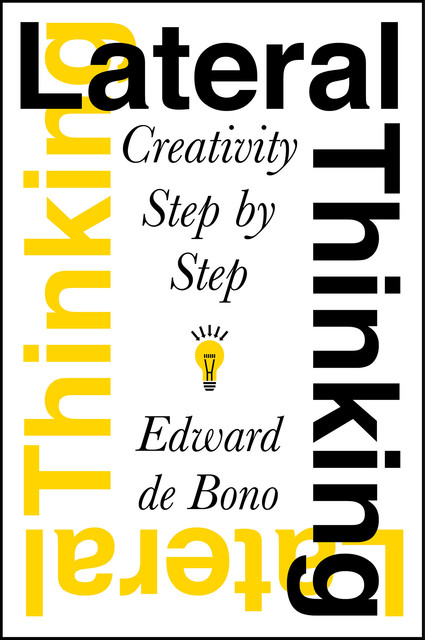Lateral Thinking
Ця книжка зараз недоступна
314 паперових сторінок
- Дата публікації оригіналу
- 2010
- Рік виходу видання
- 2010
- Видавництва
- HarperCollins, HarperCollins e-books
Враження
- meidydevitacділиться враженням9 років тому👍Раджу
Цитати
- mцитує5 років томуOne uses the reversal procedure in order to escape from the absolute necessity to look at the situation in the standard way. It does not matter whether the new way makes sense or not for once one escapes then it becomes easier to move in other directions as well.
- mцитує5 років томуDesign:
An apple picking machine.
A potato peeling machine.
A cart to go over rough ground.
A cup that cannot spill.
A machine to dig tunnels.
A device to help cars to park.
Redesign:
The human body.
A new milk bottle.
A chair.
A school.
A new type of clothes.
A better umbrella.
Organizational:
How to build a house very quickly.
How to arrange the checkout counters in a supermarket.
How to organize garbage collection.
How to organize shopping to take up the least time.
How to put a drain across a busy road. - mцитує5 років тому. Resist the temptation to judge. Resist the temptation to say, ‘this would not work because…’
2. Resist the temptation to choose one way of doing things as being much better than any other for fear of polarizing design in one direction.
3. Emphasize the variety of the different ways of carrying out a particular function. List the different suggestions and add others of one’s own.
4. Try and look at the function underlying a particular design. Try to separate the intention of the designer from the actual way this was carried out.
5. Note the features that have been put there for a functional purpose and the ones that are there as ornaments to complete the picture.
6. Question certain points — not in order to destroy them but in order to find out if there was any special reason behind them which may not be manifest.
7. Note the borrowing of complete designs from what might have been seen on television, in the cinema or in comics.
fb2epub
Перетягніть файли сюди,
не більш ніж 5 за один раз


